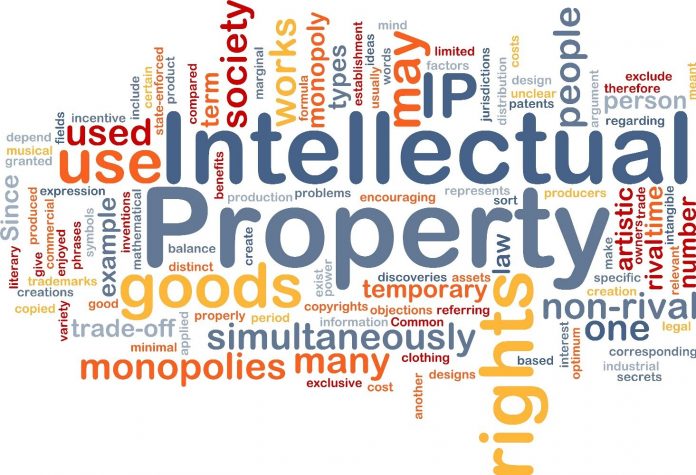This article has been written by Sakshi Jain pursuing a Diploma in Intellectual Property, Media and Entertainment Laws from LawSikho. This article has been edited by Dhruv Shah (Associate, Lawsikho) and Dipshi Swara (Senior Associate, Lawsikho).
Table of Contents
Introduction
Software is one of the most innovative fields of technology, where the graph of advancement has taken a parabolic curve. Although, one must know that this profit-making business can face devastating effects, if not protected enough to disable infringers from using it. To avoid any such catastrophe, Intellectual Property Rights come into the picture to save the day. Innovation in software products can be protected in the form of intellectual property. Intellectual Property Rights are the core foundation and one of the most valuable assets of the software industry. They offer different methods for shielding rights of ownership in the software. Essentially, four kinds of Intellectual Property Rights are relevant to software- patents, copyrights, trade secrets, and trademarks. Each of them affords distinct legal protection. While patent, copyright, and trade secret play the role of protecting the technology itself, trademark, on the other hand, protects the name/symbol that helps in identifying and distinguishing a software product from its competitors within the marketplace. This article aims at making the readers aware of the role of Intellectual Property Rights while developing software technology.
Trademark- what’s in a name
If a software developer is asked about Intellectual property protection of his software, one of the first things that will come to his mind is the protection of the unique name of his software. When a user installs software on his device, in all probability, the screen displays a shortcut to the usage of the software, which is represented by the unique logo/device mark of the software. Third parties can infringe this unique logo/devise mark so as to create confusion in the minds of the general public. To avoid such a situation, it is crucial that one must obtain trademark protection on one’s software.
If not protected properly, the software name can be breached by market competitors, and as a result, its genuine features are always at a risk of getting stolen. These infringers may not only be competitors in the same field but also someone belonging to a different field and having a coherent use of the software. For instance, M2 Software Inc. owned software for business management of the music and entertainment industry. After a while, Madacy Entertainment came up with a division called M2. In this case, the registration of the trademark immensely helped M2 Software Inc. in litigation of the matter. Thus, even though a trademark is usually not a priority as far as the intellectual property protection of software is concerned, getting it registered is crucial from a business point of view.
Patenting software
Patenting software is a major challenge, and if achieved, it rewards well to the patentee. The patent officers all across the world are very stern when it comes to the aspect of ‘abstractness’ which is mostly found in software patents. The major challenge of getting a patent on software is to counter the abstractness aspect and the fact that software does not disclose any component or mere generic functions of the computer.
As far as India is concerned, speaking about software patents on computer-related inventions, the guidelines that are issued by the patent office have now made it comparatively easier as compared to the previous guidelines. Though, it is pertinent to note that computer programs are ineligible for getting patent protection in India. Therefore, it becomes crucial for every software business to involve its patent attorney in its business journey, to prevent undue losses. Patents are the most important section of an Intellectual property portfolio, which directly translates an asset to overcome competitors in the market and help in the growth of the business. It is important to have a strategy while filing for software-related patents. This strategy will help in capturing a market share apart from providing the required protection.
Where does copyright come in?
Software is designed with the help of algorithms/executable codes that are written in programming language and are most vulnerable as far as copyright infringement is concerned. The potential infringers might copy the software codes and allow the same for the general public to use. Alternatively, they might use the codes to develop their software and market it under their name. Although in many cases, an infringer shall not copy one’s code as it is, since there are various other elements like variables and comments that are easily replaceable. Even a minor change with the same set of instructions can infringe on someone’s original software. Infringers can also use the same code in different programming languages.
Besides the software codes, copyright protection is also needed in order to safeguard the various elements related to interface and presentation, either as literary or artistic work. One needs to be strategic when claiming protection over one’s software under copyright law. There are various kinds of copyright infringements that are related to the unlicensed use of software and can hamper the business of software organizations. These include overuse of software, relicensing, counterfeiting, and obtaining software fraudulently. It is imperative to file for copyright protection of software under various forms that are available for obtaining copyright protection, and a separate filing to establish easy infringement in case of litigation before the court of law. Since the software is not patentable per se in India, it thus becomes imperative for one to file for copyright protection of one’s software since copyright is the best available Intellectual Property protection for software in India.
Protecting trade secret
A trade secret refers to any formula, device, process, pattern, compound, tool, or mechanism that is not known to the general public. It is maintained as a secret by its owner, and because it is kept secret, it gives its owner an advantage over the competitors. An exemplary illustration of a trade secret is the formula of Coca-Cola. Theoretically, a trade secret can last forever, as long as its owner makes reasonable efforts to keep it a secret and someone else does not create/discover it on its own. Many features of the software, including its codes, ideas, and concepts can be protected as trade secrets. This protection lasts as long as the trade secret status of the protected element is retained. It is pertinent to note that, unlike patents, trade secret protection does not extend to elements of software that are readily ascertainable by lawful means. Unlike patents, copyrights, and trademarks, trade secrets cannot be infringed, but one must still be cautious, as they are subject to theft. In case of theft, if the owner is able to prove the trade secret was not known to the general public and reasonable steps were taken to preserve its secrecy, its legal status as a protectable intellectual property right sustains.
Practices to minimize the risk of offshore intellectual property loss
The following practices might help in minimizing the risk of losing Intellectual Property while conducting business offshore:
- Understanding Intellectual Property Rights– The first and foremost step is to get an overview of the different laws and initiatives that are undertaken by the offshore country to protect Intellectual Property.
- Setting up an Internal Intellectual Property Protection Team– Protection of intellectual property is not a one-time act. It is rather an ongoing business responsibility. Thus, it is crucial for one to have a team in the organization that is solely responsible for monitoring intellectual properties.
- Offshore vendor history– Proper caution must be taken to understand the vendor’s history, especially concerning any intellectual property violation, before entering into a vendor relationship with an offshore entity.
- Defining IP violation clause– Before executing a contract with an offshore vendor, one must make sure to define a separate Intellectual Property Violation clause and the consequences of violation. This will immensely help to get more leverage to take any legal action if required.
- Seeking a reference check of all the team members– Checking the resumes of the offshore team is not enough. It is equally important to seek an appropriate reference check of all the team members as well, so as to make sure that no individual has had any case history of IP violation.
- Paying attention to the use of unauthorized software – As the saying goes, ‘Practice what you Preach”. It is thus advised to strictly discourage the use of unlicensed software by both, the onsite as well as the offshore team.
- Enforcing a central repository– Enforcing a central repository for all the codes and documents will help not only in improving the overall efficiency but also in avoiding numerous placeholders for critical documents and codes.
- Performing periodic IP audit– Performing a periodic IP audit, reiterating the importance of IP, examining any new work that can be copyrighted, looking into all the placeholders of the code/documents, removing all the unauthorized software/product, and updating about any change in ownership are some of the practices that everyone who is conducting an offshore business must follow.
- Enforcing the use of References– In all the meetings of the organization, it must be ensured that the appropriate references and credits are given to the owner of the work (be it internal or external). Making this practice a habit will result in raising the standards of the employees to acknowledge, respect, and protect other people’s work as well.
- Developing Awareness– Protection extended to Intellectual property can be immensely enhanced if all the employees of the organization and the offshore team are on the same page as to how much attention the organization pays to protect its Intellectual Properties. In some organizations, IP protection is a part of the performance plan for each employee and is reviewed periodically.
Conclusion
To sum it up, maximizing the economic value of software technology critically depends on understanding the nature of the intellectual property rights involved with it and efficiently using the available forms of legal protection to protect those rights. In order to protect a software business, shielding or securing the software is not just a one-time activity. But also, it ensures that it becomes a tool that enables it to bring in new business opportunities, raise funds, and provide licensing opportunities, by developing an IP portfolio. As you continue to grow, your ideas and concepts should count and should be protected against any and every sort of unauthorized use. By seeking rights over your intellectual property, you establish rightful ownership and prevent unlawful use of your software. Furthermore, intellectual property rights also help in fueling the economy and stimulating progressive innovation.
References
- https://www.jstor.org/stable/4398809
- https://unctad.org/system/files/official-document/ictsd2004ipd10_en.pdf
- https://www.iipta.com/intellectual-property-indian-software-industry/
- https://www.upcounsel.com/intellectual-property-software
Students of Lawsikho courses regularly produce writing assignments and work on practical exercises as a part of their coursework and develop themselves in real-life practical skills.
LawSikho has created a telegram group for exchanging legal knowledge, referrals, and various opportunities. You can click on this link and join:https://t.me/joinchat/J_0YrBa4IBSHdpuTfQO_sA
Follow us on Instagram and subscribe to our YouTube channel for more amazing legal content.
 Serato DJ Crack 2025Serato DJ PRO Crack
Serato DJ Crack 2025Serato DJ PRO Crack











 Allow notifications
Allow notifications



